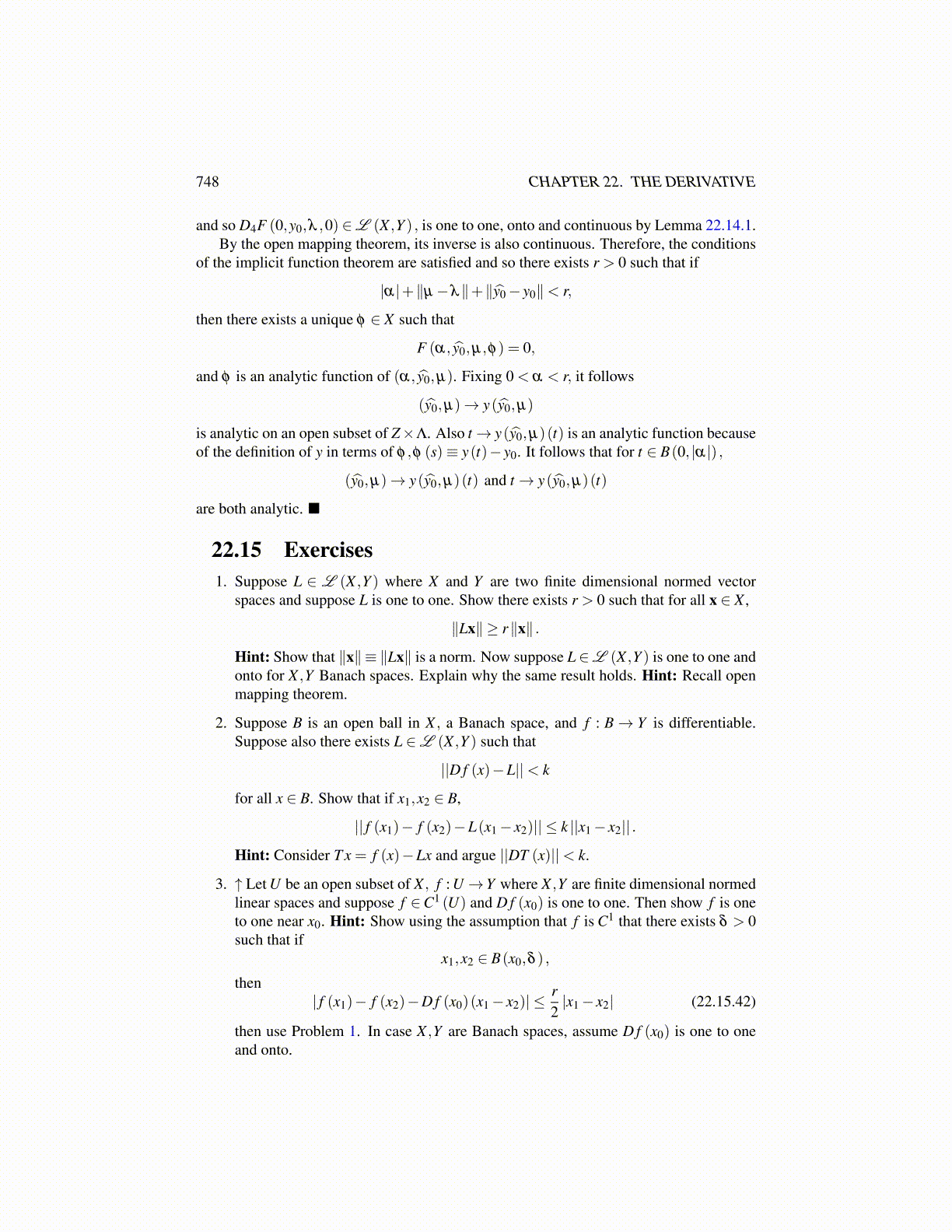
748 CHAPTER 22. THE DERIVATIVE
and so D4F (0,y0,λ ,0) ∈L (X ,Y ) , is one to one, onto and continuous by Lemma 22.14.1.By the open mapping theorem, its inverse is also continuous. Therefore, the conditions
of the implicit function theorem are satisfied and so there exists r > 0 such that if
|α|+∥µ−λ∥+∥ŷ0− y0∥< r,
then there exists a unique φ ∈ X such that
F (α, ŷ0,µ,φ) = 0,
and φ is an analytic function of (α, ŷ0,µ). Fixing 0 < α < r, it follows
(ŷ0,µ)→ y(ŷ0,µ)
is analytic on an open subset of Z×Λ. Also t→ y(ŷ0,µ)(t) is an analytic function becauseof the definition of y in terms of φ ,φ (s)≡ y(t)− y0. It follows that for t ∈ B(0, |α|) ,
(ŷ0,µ)→ y(ŷ0,µ)(t) and t→ y(ŷ0,µ)(t)
are both analytic.
22.15 Exercises1. Suppose L ∈ L (X ,Y ) where X and Y are two finite dimensional normed vector
spaces and suppose L is one to one. Show there exists r > 0 such that for all x ∈ X ,
∥Lx∥ ≥ r∥x∥ .
Hint: Show that ∥x∥ ≡ ∥Lx∥ is a norm. Now suppose L∈L (X ,Y ) is one to one andonto for X ,Y Banach spaces. Explain why the same result holds. Hint: Recall openmapping theorem.
2. Suppose B is an open ball in X , a Banach space, and f : B→ Y is differentiable.Suppose also there exists L ∈L (X ,Y ) such that
||D f (x)−L||< k
for all x ∈ B. Show that if x1,x2 ∈ B,
|| f (x1)− f (x2)−L(x1− x2)|| ≤ k ||x1− x2|| .
Hint: Consider T x = f (x)−Lx and argue ||DT (x)||< k.
3. ↑ Let U be an open subset of X , f : U→Y where X ,Y are finite dimensional normedlinear spaces and suppose f ∈C1 (U) and D f (x0) is one to one. Then show f is oneto one near x0. Hint: Show using the assumption that f is C1 that there exists δ > 0such that if
x1,x2 ∈ B(x0,δ ) ,
then| f (x1)− f (x2)−D f (x0)(x1− x2)| ≤
r2|x1− x2| (22.15.42)
then use Problem 1. In case X ,Y are Banach spaces, assume D f (x0) is one to oneand onto.